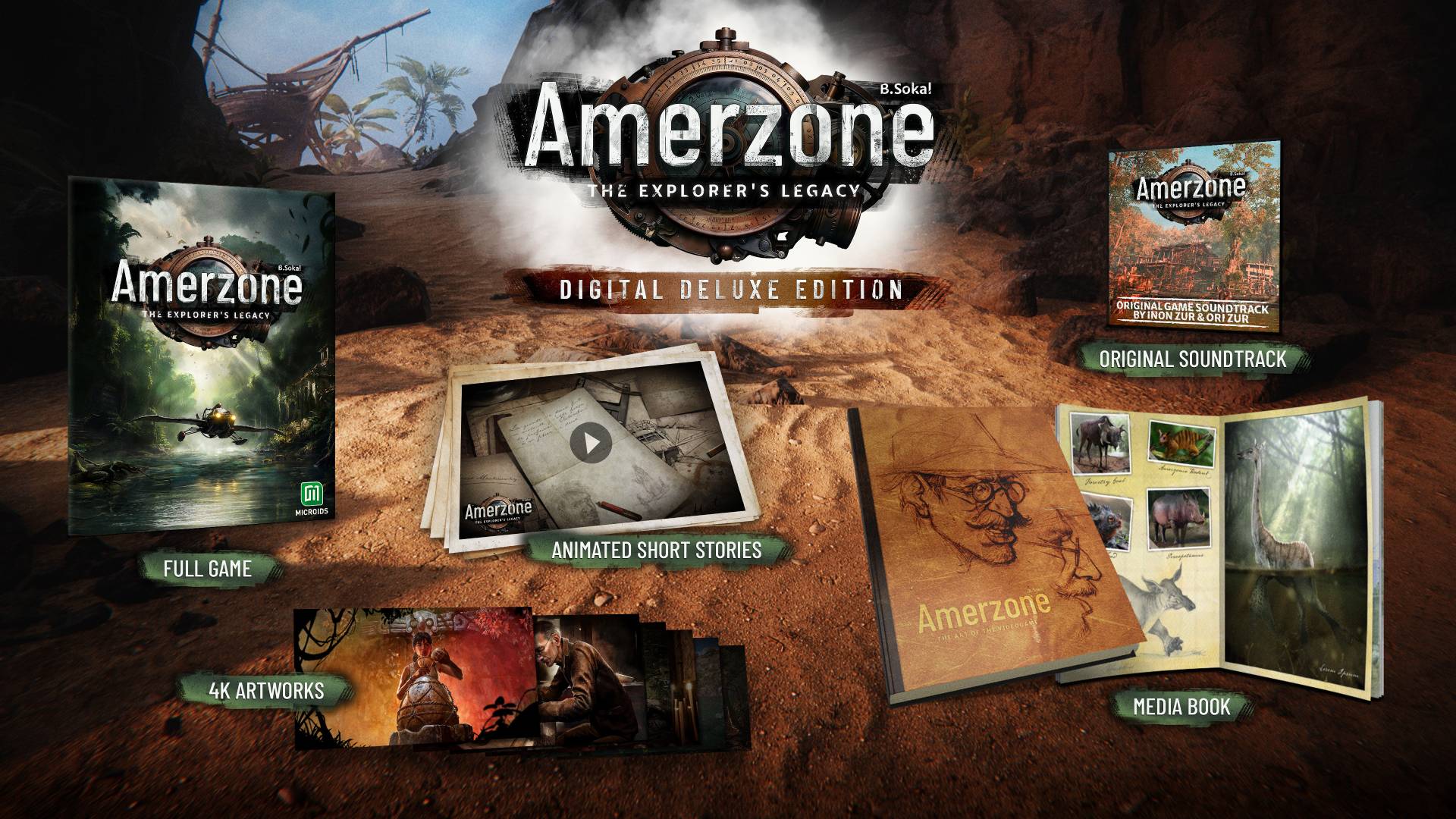The Amerzone Returns in 2025: A Renewed Experience
Released during a period when point-and-click games were prevalent and popular, The Amerzone established itself as a notable presence in the genre. Microids’ title was also part of a significant transition in adventure gaming during the late 1990s, an era following LucasArts where the genre sought new directions. While Myst (1993) introduced first-person exploration and Grim Fandango (1998) pioneered narrative innovation, The Amerzone set the stage for what would later become Benoît Sokal’s signature style in Syberia: mature storytelling, believable environments, and progression through meticulous observation. Following Benoît Sokal’s passing in 2021 and the desire to carry on his legacy, Microids decided to launch a remake of this once-cult classic. This project was assigned to their most prestigious studio – indeed, the only one, as Microids primarily works with essential external providers. Unfortunately, this project turned out to be the studio’s last, as Microids Studio Paris closed its doors before the game’s release.
More Tradition Than Modernity
The story of Amerzone in 2025 mirrors that of 1999, where you assume the role of a young journalist assigned to interview the elderly professor Alexandre Valembois. Troubled by guilt over disrupting the ecological balance of an island through the theft of a sacred egg, the explorer entrusts the player with the mission to return this artifact to its original home in Amerzone. While the narrative preserves the primary plot from 1999, it incorporates additional subplots that explore Valembois’ motivations, his relationships with students, and personal life choices, providing genuine narrative insights that enrich the universe without being essential for progression.
However, this remake does not escape certain weaknesses inherent to its time of origin. The slow pace, rigid gameplay mechanics, and occasionally outdated interface remind us that it is a game born at the end of the 1990s. Younger players, accustomed to modern standards, might become disengaged when faced with a linear, fixed structure that is not always welcoming. This is where the issue lies, as trailers misled players by suggesting free movement within these updated landscapes. However, this is not the case; you can barely move your head to observe, let alone freely or in real-time; all movements are pre-calculated. It is even more regrettable that for a remake, it would have been wiser to modernize gameplay rather than adhere to a 26-year-old legacy of mechanics. But let’s not deceive ourselves; if the gameplay hasn’t evolved, it is also due to budget constraints…
GAMEPLAY – TOO OLD SCHOOL
If the progression maintains a “step-by-step” structure, it remains slightly more fluid than that of 1999. Objects are now modeled in 3D, manipulable in all directions, and interactions are enriched by contextual animations: opening a door or drawer involves replicating the movement with the analog stick. As Amerzone is primarily an adventure and exploration game, puzzles rely on observation, logic, and careful reading of documents scattered throughout the environment. Two modes are offered: ‘Voyage’, for a more accessible experience, and ‘Adventure’, which increases difficulty by reducing hints. This caters to all profiles, from beginners to seasoned players. However, the puzzles are far from overly complex and often involve activating a mechanism, retrieving a code from a date on a postcard, or correctly connecting a machine. The game does not aim to torment the player with absurd mechanics, but some puzzles suffer from their fidelity to the original era: difficult-to-decipher handwritten texts, outdated or non-intuitive solutions, and sometimes unclear object purposes. Furthermore, some texts, written in cursive manuscript, are hardly legible, needlessly complicating puzzle resolution.
The Hydraflot, the iconic amphibious vehicle, is making a return. This retrofuturistic steampunk device can transform into a submarine, airplane, or boat as needed. A significant aspect of the adventure involves obtaining the necessary fuel and transformation modules. Although some elements may seem impractical, such as requiring a gas canister to cover a short distance, this is primarily to control the pace and guide exploration, while also extending the relatively brief lifespan of the game. The adventure concludes after approximately 6 to 8 hours of gameplay, considering the slow action pace required for completion.
If L’Amerzone’s gameplay risks alienating players due to its old-school (or even archaic) approach, it compensates with its graphics, which are quite appealing and made possible by the Unity engine. In this case, it is a success as the game displays convincing renders. The imaginary fauna, dilapidated architecture, mysterious swamps, or strange machines all contribute to an almost immediate immersion. Each environment is meticulously detailed, featuring a charming retro aesthetic that is not unpleasant, knowing that even the use of floppy disks contributes to grounding the game’s temporal setting. However, this setting is not without its flaws. The 3D models of characters and creatures are lacking, with NPCs appearing robotic and animals lacking flexibility; up close, the sense of wonder gives way to a certain artificiality. This is unfortunate given that the universe is rich and the ambient sound — though subtle — effectively supports the sense of wonder and solitude. Nevertheless, there are regular drops in frame rate, particularly during animated cutscenes or transitions between zones.
Have any thoughts?
Share your reaction or leave a quick response — we’d love to hear what you think!


